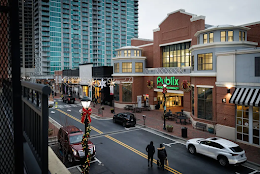Moments earlier, an Instacart delivery driver had alerted a store employee after seeing Mr. Marley in the bathroom, along with the AR-15-style rifle, which was propped against a wall. A grand jury indictment later described what had come next: “panic, terror and the evacuation of the Publix.”
Mr. Marley, then 22, was arrested without incident that day in March 2021. His lawyer, Charles Brant, noted that he had not made any threats or fired any shots, and had legally purchased his guns. Mr. Marley did not violate Georgia law, Mr. Brant said; he was “just being a person, doing what he had the right to do.”
Indeed, Mr. Marley’s arrest kicked off a long and as yet unresolved legal odyssey in which the criminal justice system waffled over what it could charge him with and whether to set him free. Clearly, visiting the grocery store with a trove of guns had frightened people. But was it illegal?
The episode, and others like it, speaks to a uniquely American quandary: In states with permissive gun laws, the police and prosecutors have limited tools at their disposal when a heavily armed individual’s mere presence in a public space sows fear or even panic.
The question of how to handle such situations has been raised most often in recent years in the context of political protests, where the open display of weapons has led to concerns about intimidation, the squelching of free speech or worse. But it may become a more frequent subject of debate in the wake of a landmark Supreme Court decision in June, which expanded Americans’ right to arm themselves in public while limiting states’ ability to set their own regulations.
The ruling also affirmed the principle of allowing states and local governments to ban guns in “sensitive places”; as examples, it cited legislative assemblies, polling places and courthouses. But the high court left much open for interpretation. “A wave of litigation is going to confront the courts with questions about what, for example, makes a restriction on guns in schools and government buildings different than in museums or on public transit,” Jacob D. Charles, a professor and gun law expert at Pepperdine Caruso School of Law, wrote in a recent blog post. (...)
John R. Monroe, a defense lawyer and the vice president of a gun-rights group called Georgia Second Amendment, is not involved in Mr. Marley’s case. But from the outside, he said, it seems baseless.
“I mean, all the guy did was be in the store with guns,” he said. “I go into Kroger with a gun, and I don’t expect to be arrested for reckless conduct when I do that. Based on the information from the case, he didn’t do anything that would even remotely constitute reckless conduct. And shame on the state for even prosecuting him for that.” (...)
Mr. Brant also offered an explanation for Mr. Marley’s conduct that day: He had acquired the guns and the body armor, Mr. Brant said, because he had felt threatened by someone in his neighborhood. On the day of his arrest, he had hoped to take his guns to a nearby shooting range but first had to run some errands, which included a stop at the grocery store. (Mr. Marley did not have a car, Mr. Brant said, which is why he was carrying the guns around with him.) While in the Publix men’s room, Mr. Brant said, Mr. Marley had taken out some of the weapons, including the rifle, to clean them after discovering that some guacamole he had bought had caused a mess inside the bag.
by Richard Fausset, NY Times | Read more:
Image: Dustin Chambers
Image: Dustin Chambers
